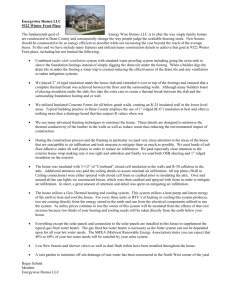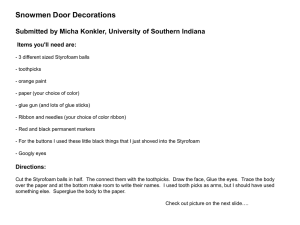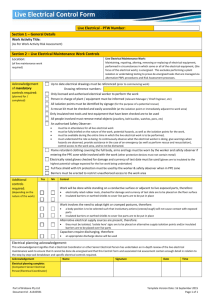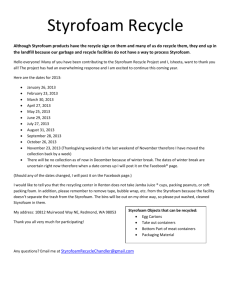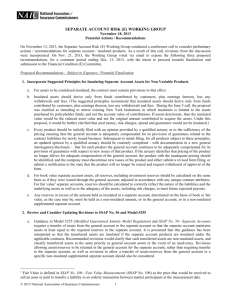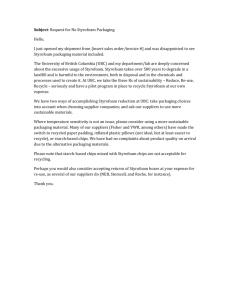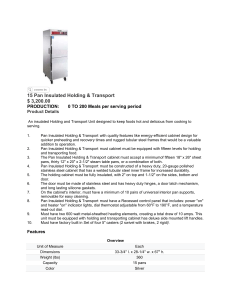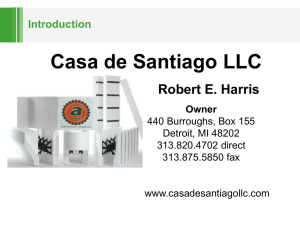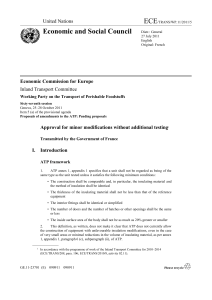Energy Efficiency Activity
advertisement
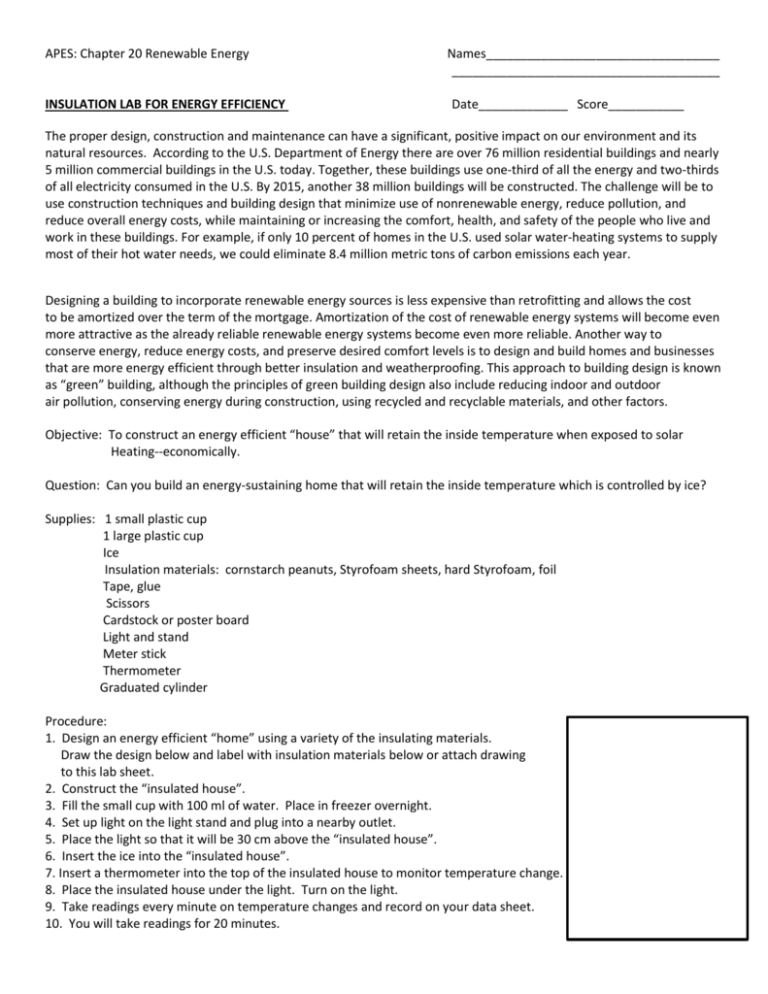
APES: Chapter 20 Renewable Energy INSULATION LAB FOR ENERGY EFFICIENCY Names__________________________________ _______________________________________ Date_____________ Score___________ The proper design, construction and maintenance can have a significant, positive impact on our environment and its natural resources. According to the U.S. Department of Energy there are over 76 million residential buildings and nearly 5 million commercial buildings in the U.S. today. Together, these buildings use one-third of all the energy and two-thirds of all electricity consumed in the U.S. By 2015, another 38 million buildings will be constructed. The challenge will be to use construction techniques and building design that minimize use of nonrenewable energy, reduce pollution, and reduce overall energy costs, while maintaining or increasing the comfort, health, and safety of the people who live and work in these buildings. For example, if only 10 percent of homes in the U.S. used solar water-heating systems to supply most of their hot water needs, we could eliminate 8.4 million metric tons of carbon emissions each year. Designing a building to incorporate renewable energy sources is less expensive than retrofitting and allows the cost to be amortized over the term of the mortgage. Amortization of the cost of renewable energy systems will become even more attractive as the already reliable renewable energy systems become even more reliable. Another way to conserve energy, reduce energy costs, and preserve desired comfort levels is to design and build homes and businesses that are more energy efficient through better insulation and weatherproofing. This approach to building design is known as “green” building, although the principles of green building design also include reducing indoor and outdoor air pollution, conserving energy during construction, using recycled and recyclable materials, and other factors. Objective: To construct an energy efficient “house” that will retain the inside temperature when exposed to solar Heating--economically. Question: Can you build an energy-sustaining home that will retain the inside temperature which is controlled by ice? Supplies: 1 small plastic cup 1 large plastic cup Ice Insulation materials: cornstarch peanuts, Styrofoam sheets, hard Styrofoam, foil Tape, glue Scissors Cardstock or poster board Light and stand Meter stick Thermometer Graduated cylinder Procedure: 1. Design an energy efficient “home” using a variety of the insulating materials. Draw the design below and label with insulation materials below or attach drawing to this lab sheet. 2. Construct the “insulated house”. 3. Fill the small cup with 100 ml of water. Place in freezer overnight. 4. Set up light on the light stand and plug into a nearby outlet. 5. Place the light so that it will be 30 cm above the “insulated house”. 6. Insert the ice into the “insulated house”. 7. Insert a thermometer into the top of the insulated house to monitor temperature change. 8. Place the insulated house under the light. Turn on the light. 9. Take readings every minute on temperature changes and record on your data sheet. 10. You will take readings for 20 minutes. 11. After 20 minutes, turn off the light and take out your ice cup. Pour any liquefied water into the graduated cylinder. Measure the volume and record in the data table. The group that has the least amount of water melted will receive an “A”. Other groups will be evaluated. 12. Another component for this project is to determine the energy efficiency, which is The term energy efficiency refers to the measure of the useful energy. We can save energy in building by getting heat from the sun, super insulating them, and using plant covered green roofs. We can save energy in existing buildings by insulating them plugging leaks, and using energy-efficient heating and . cooling systems, appliances, and lighting 13. Identify the costs to your energy efficient “insulated house”—is it sustainable and economical? Have you conserved resources to build it? To do this, you must take apart your house and count the materials you placed into your design. Costs: 1. Cornstarch peanuts: 2. Styrofoam sheets: 3. Styrofoam block: 4. Foil 5. Tape/glue: 6. Fee Items used a. PeanutsCornstarch b. Styrofoam sheets c. Styrofoam block d. Foil e. Tape/Glue f. Disposal Fee for each type of non-biodegradable items Total cost for “insulated house” $ 50.00 each – Made up of cornstarch and will biodegrade. $100.00 each (5 x 5”) – not biodegradable. Extra fee for disposal. $100.00 each (3” pieces) – not biodegradable in landfills. Extra fee for disposal. $ 50.00 each (8” pieces) – recyclable for reuse of other materials. $ 25.00 for project $500.00 for each non-biodegradable item used. Cost of your Insulated House Quantity Cost per item Total Cost Time 0 min 1 minute 2 minutes 3 minutes 4 minutes 5 minutes 6 minutes 7 minutes 8 minutes 9 minutes 10 minutes 11 minutes 12 minutes 13 minutes 14 minutes 15 minutes 16 minutes 17 minutes 18 minutes 20 minutes Change in Temperature of Insulated Home Temperature °C Starting Volume: 100 ml Liquid in Grad Cylinder: _____ml Ending Volume in house: _____ml Analysis Questions: 1. How long did it take your ice to “melt”? Did it take longer than 20 minutes to melt the ice? Why so? 2. State factors that caused your ice to melt: 3. In the above reading, how can one make a building energy efficient? 4. What are the class costs to build their “homes”? a. Your costs:__________ b. Class average? _______ c. How does your cost compare to the class average? Why? 5. Using the internet, define “green” building. State characteristics by today’s standards which would make a building green? 6a. Compare it to your “building”—was it energy efficient? Yes or No? Why or why not? 6b. Does cost matter in building or green building design? What should really matter? 7. Did you use renewable or biodegradable building materials? 8. How would you make a building “energy efficient”? How would you improve your design? 9. What would happen if you used hot water inside the “house” instead? How would you design this house if you wanted to keep out the cold? Is it any different than how you designed this house? Explain. 10. What if the climate was an arid climate? Would you need to alter the design? Explain.

